 [Goa Tourism Department] • Trusted Partner for GTDC Hotels & Holidays
Certified & Authorized Travel Company by
[Goa Tourism Department] • Trusted Partner for GTDC Hotels & Holidays
Certified & Authorized Travel Company by
 [Goa Tourism Department] • Trusted Partner for GTDC Hotels & Holidays
[Goa Tourism Department] • Trusted Partner for GTDC Hotels & Holidays
 [Goa Tourism Department] • Trusted Partner for GTDC Hotels & Holidays
Certified & Authorized Travel Company by
[Goa Tourism Department] • Trusted Partner for GTDC Hotels & Holidays
Certified & Authorized Travel Company by
 [Goa Tourism Department] • Trusted Partner for GTDC Hotels & Holidays
[Goa Tourism Department] • Trusted Partner for GTDC Hotels & Holidays

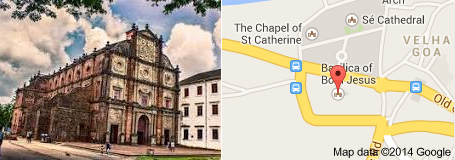
Built in the 16th century, this magnificent edifice is the most popular and famous of all the churches in Goa. The mortal remains of St. Francis Xavier, kept in a silver casket, are enshrined here. The casket was wrought by Goan silversmiths in 1636 - 37. Dedicated to Infant Jesus, this church is now a World Heritage Monument.

It is inside this chapel that one will come across the silver casket that houses the immortal remains of St. Francis Xavier. This silver casket which is placed at the top serves as a religious observance. If you count, there are 7 panels on the casket, each of which has got 2 plates, one over the other which are carved with important scenes from the life of St. Francis Xavier. Certain fixed "visiting hours" have been set.
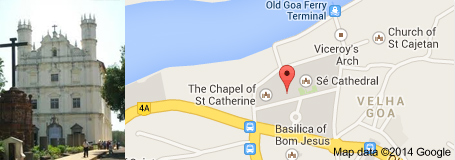
The entrance and the choir were built in the Manueline style, the only fragment of its kind in the East. First built in 1517, it was later rebuilt twice, in 1521 and in 1661. The interior is illustrated with exquisite paintings and the floor has a large number of tombstones with coats-of-arms. The adjacent convent now houses the Archaeological Museum.
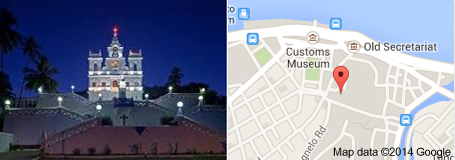
The Panjim Church of Our Lady of the Immaculate Conception is placed on the hillside and just high above the Idalco Palace built by Adil Shah. Standing on the gallery of the church, you can see the entire view of the lovely Panjim city. It is one of Panjim’s best attractions located in the heart of Panjim city and is the first church of Goa, built in 1541.
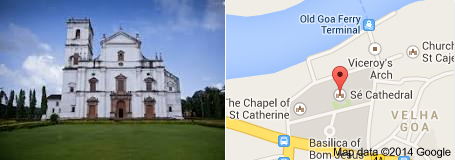
The most imposing of all the churches at Old Goa, its vaulted interior overwhelms visitors with its sheer grandeur. This Cathedral has five bells, among them the famous Golden bell, the biggest in Goa and one of the best in the world. The church is dedicated to St.Catherine of Alexandria.

Close to the Nunnery is a lofty tower, defying the vagaries of the weather. The tower is the only surviving one of the four that once stood there. The Church when intact was perhaps the biggest in Goa. Another chapter to its history was added recently with the unearthing of the tomb of Queen Ketevan of Georgia.
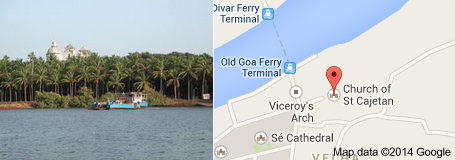
Built in 1661 in the style of St.Peter’s Basilica in Rome. It has a Corinthian façade with the main altar dedicated to Our Lady if Divine Providence.

One of the earliest built in Goa, the church bears an inscription on the conquest of Goa by Afonso de Abuquerque in 1510.
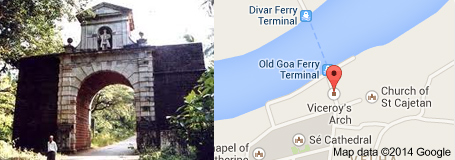
One of the gates of Adil Shah’s Fort, it was renovated by the Portuguese conquerors and was the gateway to Goa for Portuguese Governors. Every incoming Viceroy used to disembark at this place..

The Reis Magos church was constructed in 1555 and was one of the earliest churches built in Goa and the first in Bardez Taluka dedicated to the three Magi–Kings. This church was once the residence of all dignitaries and also a mission centre of the Franciscan order. There is a fort adjacent to this church.

Situated amidst picturesque surroundings, the Church of Mae de Deus at Saligao (Bardez) was built in 1873. The shrine of the miraculous statue of Mae de Deus (Mother of God) was brought from the ruins of the convent of Mae de Deus at Old Goa. This beautiful church is amongst the finest in the Gothic style and is attractively illuminated at night.

Dedicated to St.Ana, it is a remarkable piece of ancient Christian architecture, situated in Talaulim. Built in 1695 on the bank of the Siridao river, its unique feature are the hollow walls through which people could walk in secrecy for confession.